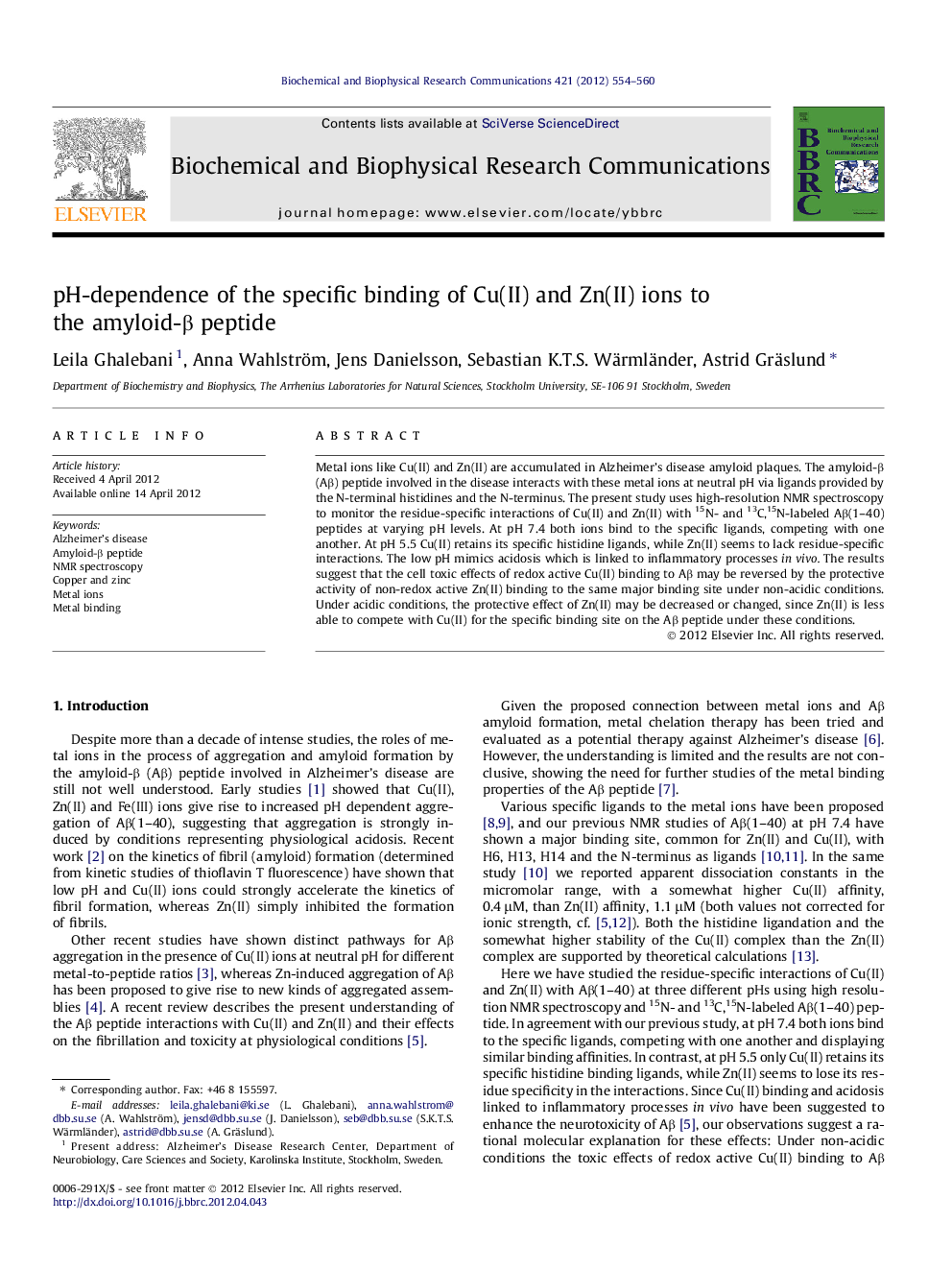| Article ID | Journal | Published Year | Pages | File Type |
|---|---|---|---|---|
| 1929662 | Biochemical and Biophysical Research Communications | 2012 | 7 Pages |
Metal ions like Cu(II) and Zn(II) are accumulated in Alzheimer’s disease amyloid plaques. The amyloid-β (Aβ) peptide involved in the disease interacts with these metal ions at neutral pH via ligands provided by the N-terminal histidines and the N-terminus. The present study uses high-resolution NMR spectroscopy to monitor the residue-specific interactions of Cu(II) and Zn(II) with 15N- and 13C,15N-labeled Aβ(1–40) peptides at varying pH levels. At pH 7.4 both ions bind to the specific ligands, competing with one another. At pH 5.5 Cu(II) retains its specific histidine ligands, while Zn(II) seems to lack residue-specific interactions. The low pH mimics acidosis which is linked to inflammatory processes in vivo. The results suggest that the cell toxic effects of redox active Cu(II) binding to Aβ may be reversed by the protective activity of non-redox active Zn(II) binding to the same major binding site under non-acidic conditions. Under acidic conditions, the protective effect of Zn(II) may be decreased or changed, since Zn(II) is less able to compete with Cu(II) for the specific binding site on the Aβ peptide under these conditions.
► Cu(II) and Zn(II) display pH-dependent binding to the Aβ(1–40) peptide. ► At pH 7.4 both metal ions display residue-specific binding to the Aβ peptide. ► At pH 5.5 the binding specificity is lost for Zn(II). ► Differential Cu(II) and Zn(II) binding may help explain metal-induced AD toxicity.
